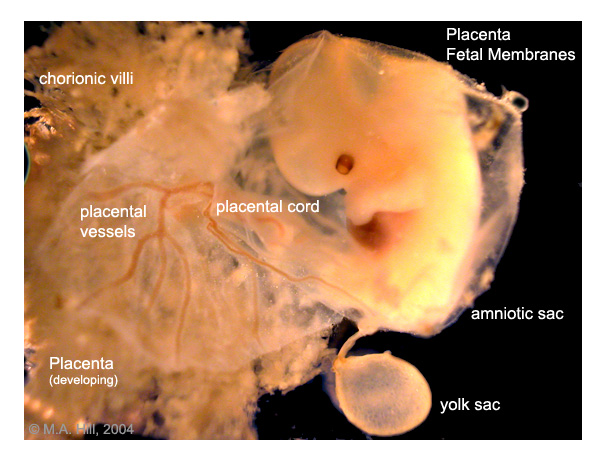The Development of the Placenta

Have you ever wondered how the placenta is developed? Let’s have a look into some of the research that has happened behind this amazing organ during development and beyond.

Fertilisation leads to the development of the blastocyst, which consists of the embryoblast (this is cell mass from which the embryo develops) and trophoblast (from which the fetal membranes and elements of the placenta develop).
During implantation, the embryonic pole of the blastocyst is connected to the endometrium of the uterus and completely penetrates the maternal connective tissue, where there is large amounts of blood supply. The placenta begins to develop once the endometrium starts exerting metabolic and secretory activity in response to the presence of the blastocyst.
The next phase is the syncytiotrophoblast, this develops from the outer layer of the blastocyst and is the base structure for development of the placenta. A close connection between maternal and embryonal blood circulation eases the exchange of metabolites and gases by diffusion. This does not result in direct contact between the maternal and fetal blood, instead it functions as a barrier, regulating the passage of substances.
Composition of the placenta
Just one single placenta weighing 450g contains an average of 234 calories. 899mg of cholesterol, 4g of fat, 48g of protein, 513g of sodium, plus significant quantities of trace elements, such as:
- Iron and Selenium
- Calcium
- Magnesium
- Copper
- Phosphorus
- Potassium
- Zinc
In addition to the above, the placenta also contains the essential and non-essential elements below:
- Amino acids alanine,
- Aspartic Acid
- Histidine
- Arginine
- Leucine
- Lysine
- Proline
- Phenylalanine
- Tyrosine
- Valine
- Tryptophan
Vitamins too?!
As if that wasn’t amazing enough, many vitamins can also be found in the placenta. Vitamins B1, B2, B5, B6, B7, B9, B12 are all present; cytokines and growth factors (G-CSF, GM-CSF) are also found in the placenta, facilitating intracellular endocrine and paracrine signalling, therefore regulating the growth, proliferation, migration and differentiation of cells.
Which hormones can you find in the placental tissue?
Placental tissue contains various hormones, including oxytocin, oestrogens, progesterone, human placental lactogen, ACTH and CRH. These can be found in both raw placenta and dehydrated powder after the encapsulation process that your Placenta Remedies Provider will complete.
Jena University talk about their research here
Resources
https://www.ncbi.nlm.nih.gov/pmc/articles/PMC6138470/
https://pubmed.ncbi.nlm.nih.gov/30344334/
https://pubmed.ncbi.nlm.nih.gov/29941176/